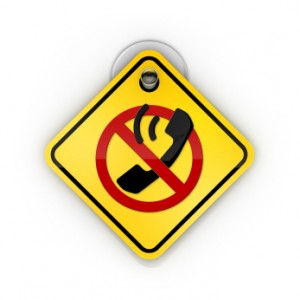 A colleague of mine went to the movies last weekend and saw not one, but several advertisements disguised as PSAs from different smartphone providers.
A colleague of mine went to the movies last weekend and saw not one, but several advertisements disguised as PSAs from different smartphone providers.
The advertisements incorporated a variety of techniques designed to encourage viewers to turn off their cellphones during the film. Some were tried and, frankly, untrue(“We’ll kick you out if you don’t turn off your phone!”), but one stood out. It promised to text a surprise video after the film to viewers who texted a special code to the provider before the movie. When sent, the code grants the provider permission to automatically dim the phone’s screen to acceptable theater light levels.
The latter, more innovative tactic not only worked on my colleague — a woman who never turns off her cell phone in a theater — but it got me thinking. In the same way that movie theaters are featuring innovative ads in their efforts to improve customer experience, sales leaders can get innovative with strategies and tools that motivate their teams and, ultimately, accelerate revenue.
Below, I’ve shared three key gamification “Dos” (and several “Don’ts”) from this theatre example that all sales managers should have in their motivation arsenal.
Change the Game
As a driver of innovative sales results for companies, I like seeing the contrast between old school tactics and new, cutting-edge techniques that motivate people. The approach above is one that not only highlights new techniques, but also shines a light on something I wrote in a recent Venture Beat article: Gamification has become widespread because it plays into people’s ambitious nature. Even though it isn’t a magic bullet, it can be a game-changer when used effectively!
Here are three valuable lessons we as sales professionals can learn from what this cell phone provider did right:
- Entertain — Getting a surprise video is fun. Why wouldn’t you want to turn off your phone during a movie to receive it afterward? In the same way, look to create sales competitions that are fun and engaging for your team. Encourage them to share their thoughts and ideas.
- Keep it Simple — The smartphone provider’s strategy worked because it was easy to understand what needed to be done. To that end, pick only a few behaviors to motivate your team; too many can get confusing.
- Offer Real-time Feedback/Rewards — Show reps where they stand, both in comparison to others and in proximity to reaching their own goals. Then, layer rewards to amplify their motivation to act. Would my colleague have been as likely to act if the cell provider hadn’t promised to send the video right after the video? Chances are, she wouldn’t have.
We all know that people grasp information in different ways — some are visual learners, some are auditory learners, and some people are both. But what almost all people, including (and, perhaps, especially) reps, have in common in today’s fast-paced world is the need to process information in quick, fun ways, and a desire for reward.
Add Elements that Make the Game Even Better
Using gamification to address many a movie-goer’s pet peeve is much better than threats of eviction, no? But, I also recognize the potential to provide even larger, more meaningful rewards for ‘players,” and include elements of competition into the strategy.
For example, each cell provider could learn a few gamification secrets from Mark Gold, owner and chef of Los Angeles eatery Eva Restaurant. Mark came up with a great way to motivate behavior in his restaurant: he offers patrons 5% off of their total bill if they surrender their cell phones to the wait staff before dining. Participation is voluntary, but Mark claims that about 40% of his customers choose to opt in. And why wouldn’t they? These days, enjoying an entire meal — or movie, for that matter — sans Instagram or Facebook is a luxury.
In the same vein, theater owners might apply a comparable tactic by offering ticket discounts or snack bar coupons, along with sharable badges, to patrons who give up their phones at the door. This would not only reward positive, meaningful social behavior, but would also send a message that thoughtful patrons are highly valued.
Imagine if someone tweeted this about your company:
“Turned my smartphone off during #LesMis and got a coupon for free popcorn. Thank you, @BestMovieTheatreEver!”
Conclusion
In the same way that the PSA succeeded in improving the theatre experience, enhancing expectations and creating a desire for more, you can motivate your team to close more deals and increase revenue with today’s most powerful strategies and tools.



